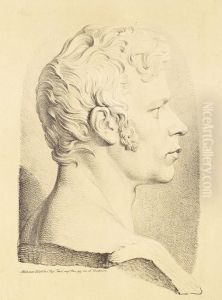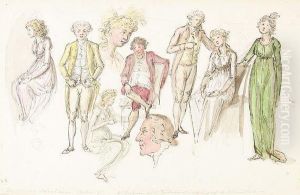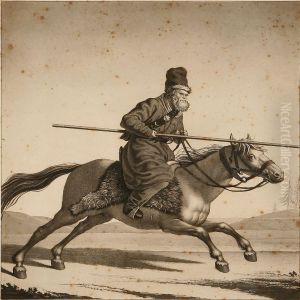Ludwig Buchhorn Paintings
Ludwig Buchhorn was a German artist and engraver known for his diverse subject matter and techniques, spanning from classical to romantic themes. Born on April 11, 1770, in Magdeburg, Germany, Buchhorn developed an early interest in art, which led him to pursue studies at the Berlin Academy. His talent and dedication to his craft soon became evident, allowing him to carve out a significant place in the art world of his time.
Buchhorn's career was marked by his versatility. He worked across various mediums, including etching, engraving, painting, and drawing. This adaptability helped him explore a wide range of subjects, from landscapes and portraits to historical scenes and allegories. One of his notable contributions to art was the refinement of the aquatint process, a technique that allowed for more nuanced tonal effects in prints. This skill made him highly sought after for book illustrations, particularly for works that required detailed and atmospheric images.
Throughout his life, Buchhorn was an active participant in the artistic communities of Germany. He spent significant periods in cities such as Dresden and Frankfurt am Main, where he was influenced by and contributed to the burgeoning romantic movement in art. Despite the romantic era's emphasis on emotion and individualism, Buchhorn maintained a classical clarity in his compositions, a testament to his academic training and personal aesthetic preferences.
Later in his career, Buchhorn focused increasingly on teaching, passing on his knowledge and techniques to a new generation of artists. He held positions at various institutions, where his influence extended beyond his own works to shape the practices and styles of future artists. Ludwig Buchhorn died on October 28, 1856, in Dresden. Though he may not be as widely recognized as some of his contemporaries, his work remains an important link between the classical and romantic periods in German art, showcasing the transition in styles and themes during the early 19th century.


